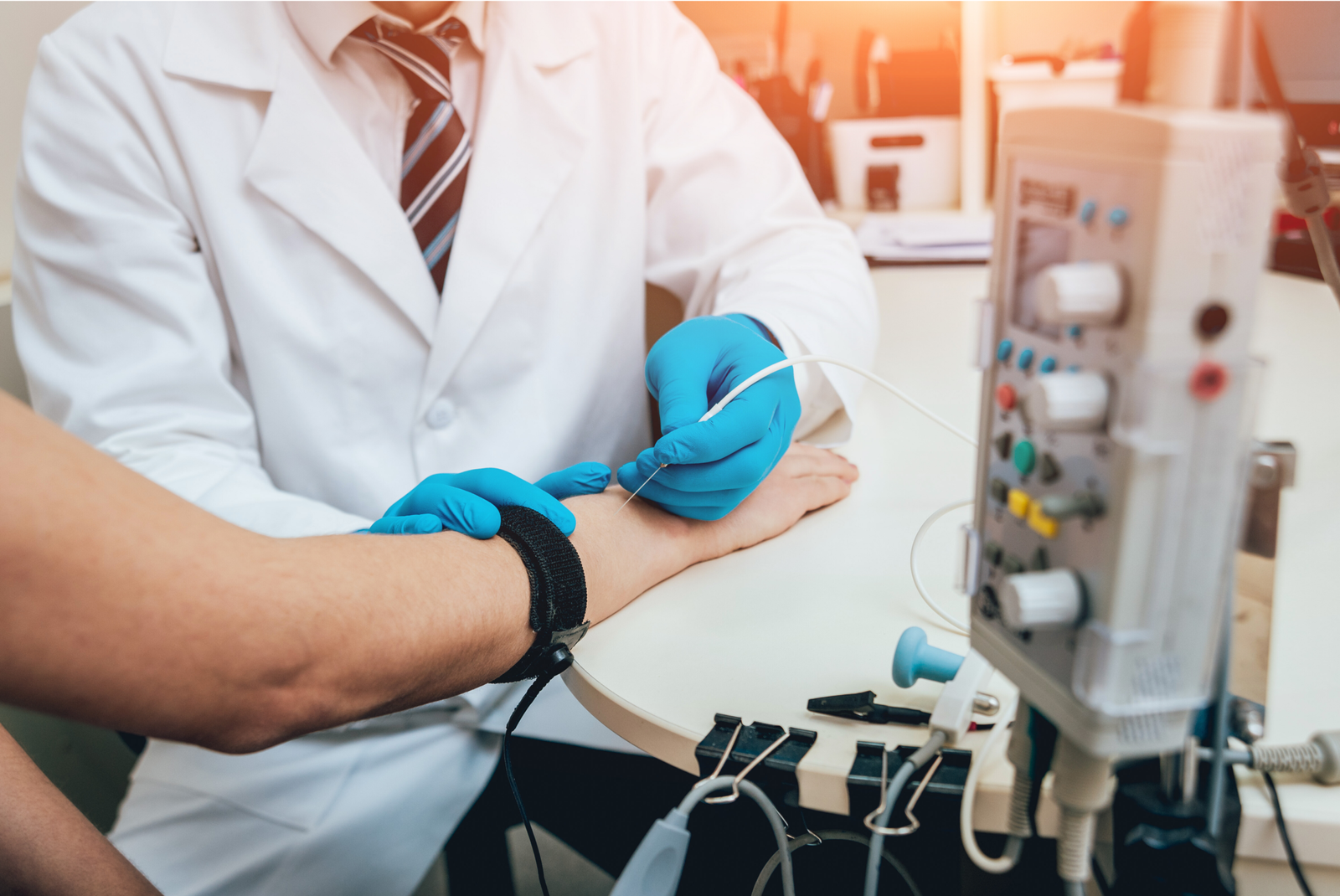Working Time
- Mon - Sat: 9 AM - 4 PM
Sun : 9 AM - 2 PM
Contact Info
-
Phone: 9990507691, 9811892896
- srivastavamri@gmail.com
Ask the Experts
EMG and NCV

EMG
Electromyography is the diagnostic process that is used to diagnose the condition of the nerve cell and the muscles. The nerve cells are also known as motor neurons. This test helps to send out the electrical signals that cause muscles to relax and contract and detect neuromuscular disorders.
NCV
Nerve Conductivity Velocity (NCV) is a diagnostic process that is used to diagnose nerve damage and dysfunction. It is the procedure to evaluate how quickly electrical signals move through peripheral nerves and also check whether the nerve has been damaged or not. This test is also known as Nerve Conductivity Study (NCS).
Why are these tests done?
EMG and NCV both tests are done to diagnose the problem and reveal the root cause of muscles and nerve pain related to the:
- Neuromuscular diseases
- Nerve problems in the spine
- Nerve problems anywhere in the body
- Peripheral nerve problems in your arms or legs
- Guillain-Barre syndrome
These tests are done to the people who are continuously suffering from problems:
- Pain or cramping
- Tingling or numbness
- Muscle weakness
How are these tests done?
Before going to the exam your doctor may ask you to remove your clothing and ask you to wear the hospital gown. After that, you may need to lie down or sit during the procedure.
The EMG test is done by using the electrode on the skin. The doctor uses a thin needle that penetrates the skin and goes into the muscles. You may ask to relax your muscles that help the doctor to study the muscles and this test shows how well your muscles are responded well to the nerve signals. This test is done when you are suffering from any infection, diseases, circulation problems, or lack of muscle fitness.
The NCV test is done by using electrodes also. Your doctor applies a gel that helps electrodes to stick on your skin. The two electrodes are placed in which one is used to stimulating the nerve and second is used to record the stimulation and this can be done by giving the mild and brief shock from the electrode. This test may be uncomfortable but not painful.
These both tests take about 30 to 60 minutes.
Tips to remember:
- Remove all metal objects like jewellery before going to the procedure
- If you take anticoagulants or antibiotics, inform your doctor before the test.
- Do not drive after the test.
- Do not smoke for at least three hours before the procedure.
EEG/EMG/NCV TEST PACKAGE
Srivastava MRI And Imaging Centre offers state-of-the-art EEG, NCV, and EMG services that unlock precise insights into neurological health. Our cutting-edge diagnostics provide unparalleled accuracy, and for a limited time, enjoy a 15% discount on these advanced services. Trust us for comprehensive neuroimaging, where excellence meets affordability, and make an appointment today for a healthier tomorrow.
- EEG
- SLEEP EEG
- NCV Two Limbs
- NCV Four Limbs
- EMG Two Limbs
- EMG Four Limbs
- EMG+NCV Two Limb
- EMG+NCV Four Limb
- NCV Two Limbs (CTS)
- RNS Two Limbs
- HOLTER 4 Hours
- ABPM
- PFT
- PFT BRONCHO (BDR)
- VEP
- BEAP

